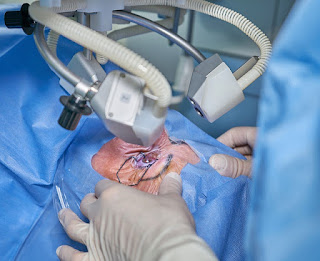Penile Reconstruction after Polymethilmetacrylate Injection| Stephy Publishers
Modern Research in Plastic and Reconstructive Surgery - (MRPRS) | Stephy Publishers
Abstract
Rising number of
aesthetic procedures in men directed to enhance genitalia has alerted the
medical community due to several complications related to them. Most of those
procedures are performed in an office under local anesthesia using different
kind of substances, most of them known to be harmful for humans; still,
patients seek those procedures as a “safe” way to meet their goals. We present
a reconstruction case due to Polymethilmetacrylate injection for penile
enhancement.
Keywords
Penile, Reconstruction,
Polymethilmetacrylate
Case Report
It isn’t new nor a
recent practice of several so called “easy”, “in and out office” enhancing
procedures. History of adjuvant substances such as petroleum jelly (liquid
Vaseline) date back 1886 reported by Balzer1 used to correct
a scrotal deformity caused by tuberculosis infection, he described the
complications caused by its use. Polymethylmethacrylate (PMM) has been widely
accepted in orthopedic surgery since Judet2 introduced the
first hip prosthesis made from PMM. As PMM in orthopedic surgery is considered
highly biocompatible, in 1996 McClelland et al.,3 evaluated its use as Soft-Tissue augmentation, in their
animal study, they found that PMM implant did not appear to be a useful
alternative for soft-tissue augmentation; they described that Artecoll (a brand
of PMM) is difficult to extrude, even though through a large 27-gauge needle,
moreover, all implant sites showed an increasing inflammatory reaction over
time.
Grassi et al.,4 reported complications of PMM use as aesthetic soft-tissue
filler in 32 patients, although PMM is widely used in Brazil for face and body
enhancement, most of the patients showed complications 6 to 12 months after the
procedure and even years later, implant site might get a chronic inflammatory
reaction. The appearance of symptoms may differ according to the site of
injection, type of the substance, quantity and patient inherent immune
response.5 Treatment can become challenging due to
material migration and increasing risk of an autoimmune response that may
continue even after removing the forieng material.6–8 The majority of cases will show skin compromise even after
removing the substance, for that reason, some patients can get a greater
benefit if treatment is directed not only to remove the underlying substance
but replacing the skin by using different cutaneous flaps or skin grafts.7,9
There is an increasing
industry that claims a risk free penile enhancement that lacks scientific
support. Despite the increasing number of complications reported in medical
literature, physicians and non medical practitioners still use PMM for penile
augmentation. A 32 year old man was referred to my office due to PMM injection
of twelve syringes for penile augmentation; the original procedure was performed
by an Urologist at his office three years before his consultation, 2 years
later the patient noticed an increasing penile deformity due to severe fibrosis
accompanied with erectile problems and an increasing urination difficulty, the
patient was treated by a plastic surgeon that managed the complication by
removing all the affected tissue including the skin. To give temporal coverage,
he covered the entire phallus with scrotal skin, leaving exposed the unaffected
glands.
To read more #ReconstructiveSurgery
https://www.stephypublishers.com/mrprs/fulltext/MRPRS.MS.ID.000505.php
#Openaccessjournals
https://www.stephypublishers.com/



Comments
Post a Comment